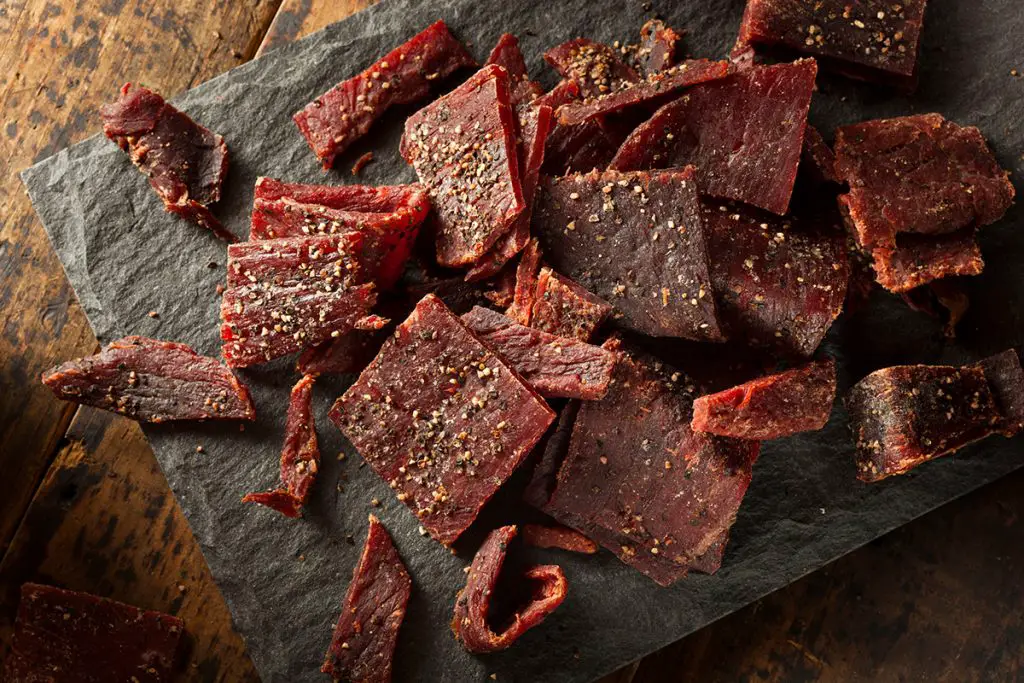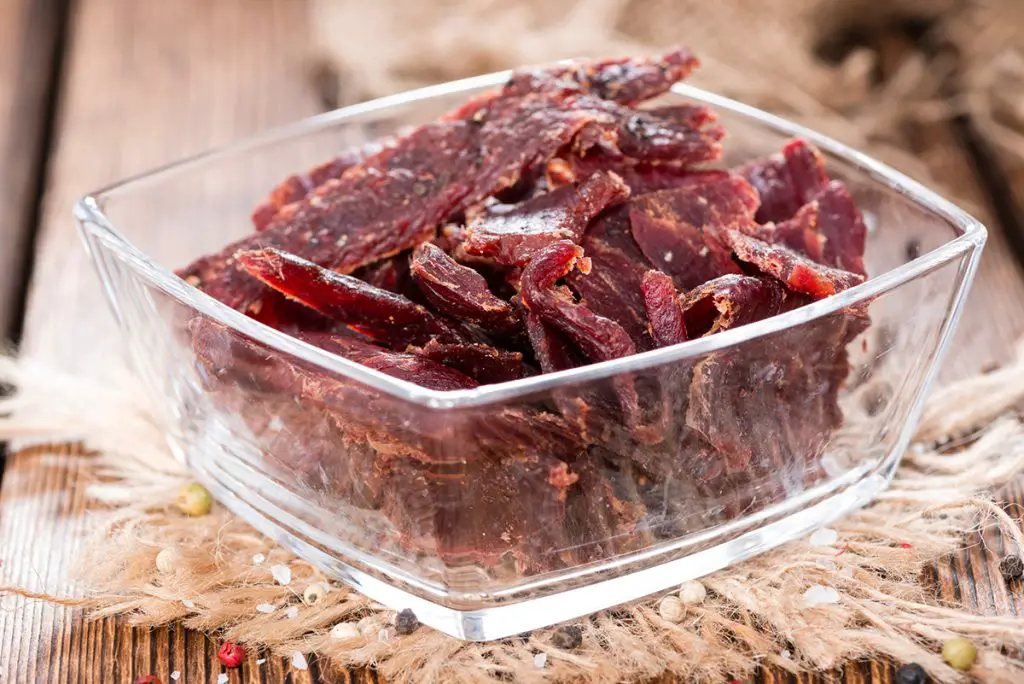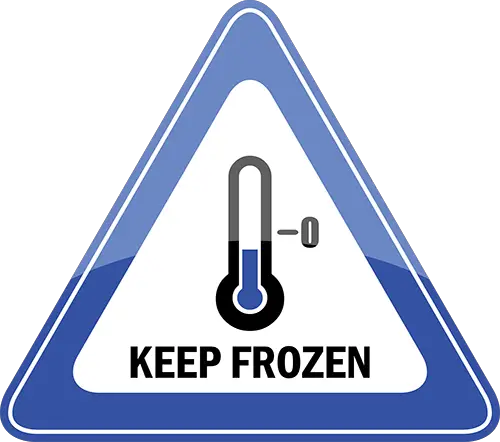Can You Freeze Jerky? (Homemade & Store Bought)
Jerky is one of the healthiest and protein-rich snacks you can find in a pinch. However, even though it is a cured meat that can withstand longer periods of time without spoiling, after a while, you may want to look for some alternative ways to store it in a way that preserves its nutritional value and flavor. For this reason, many of you may be wondering: Can you freeze jerky?
You can freeze jerky to optimize its shelf life. The store-bought varieties rarely require this storage approach as they already have added preservatives. However, freezing can do wonders for homemade jerky, which normally wouldn’t last beyond a month or two.
In the following sections, I’ll take you through everything you need to know about how to properly freeze jerky and optimize its shelf life.
How Do I Freeze Jerky?
Here are a few steps you can follow to freeze jerky:
- Place the jerky in freezer storage bags.
- Seal the storage bags properly.
- Put a date label on the packaging.
The process couldn’t get more straightforward than this. However, there still are some important factors and considerations you’ll want to account for when going through this process. Therefore, in the following paragraphs, I’ll delve more into each step to help make the procedure as quick and effective as possible.

Place the Jerky in Freezer-Safe Storage Bags or Containers
The first step you’ll want to take is placing the slices of meat in a container. If you’re storing commercial jerky, you can use the container you’ve bought it in. For the homemade version, you’ll have to find an empty one that’s best-suited in size and material.
After you place your container in the freezer, it will serve as a shield that can deprive the microorganisms in the air of the ability to latch onto the jerky and cause it to rot.
Seal the Storage Container or Bag Properly
You want to make sure that not much air is left in the containers before sealing to increase the shelf life of your jerky. Therefore, ideally, you’d want to replace the lid on the airtight container and secure it tightly while inspecting for any signs of damage.
Vacuum-sealed containers are ideal for this process. If you’re using freezer storage bags (Amazon) you can use the zip lock closing trick for best results, as it eliminates as much air as possible from inside the bag.
Here’s how you do it: Seal the two opposite sides of the ziplock bag and leave a small gap in the middle. Use your mouth to suck as much air as you can and seal the gap quickly. And just like that, you’ll have made your own vacuum-sealed bag.
Ensure that you use freezer-safe containers to avoid freezer burn. Freezer burn often occurs when the jerky loses excessive moisture, while oxygen takes its place. What you get in return is drier, tougher jerky that is discolored.
An extra layer of insulation on top of the plastic bags will keep the jerky’s moisture intact, ensuring that it stays fresh for longer. Wax paper, aluminum foil, and butcher paperwork are all excellent alternatives for this, although you can use any other external wrappings that are freezer-safe.
Put a Date Label on the Freezer Jerky Packaging
Labeling helps keep track of how long the jerky has been in the freezer or when choosing between several batches frozen on different days. You can use a marker pen to write the date on the freezing container or a piece of tape, especially if you intend to reuse the bag.
Never put warm jerky in the freezer after sealing. Condensation can occur due to extreme temperature fluctuation, which, in this case, you’ll see water droplets forming all over the bag’s interior
The water droplets then turn into ice, which burns the jerky due to direct contact, rendering it tough and flavorless. The only way to avoid this from happening is to let the meat cool first, preferably in the refrigerator, for an hour or two before freezing.
How Long Does Jerky Last in a Freezer?
Jerky lasts up to a year in the freezer, after which it deteriorates in quality with every passing month. Ideally, you should consume it within eight months. Please note that you can still consume jerky that is over a year old, but its taste and texture will have notably deteriorated by that point.

Defrosting Jerky
It’s now time to enjoy that meaty snack you stored several weeks or months ago. Knowing how to properly defrost jerky can be essential to your meal’s enjoyment and overall safety.
Start by thawing the meat in the fridge and not in hot water or on the counter. A drastic fluctuation in temperature when thawing jerky can significantly deteriorate its quality and taste. Therefore, by leaving it in the fridge overnight, you’ll be able to avoid any form of bacteria growth that would otherwise rapidly occur if left at room temperature.
Can You Refreeze Jerky?
You can’t refreeze jerky. Suppose you have thawed some jerky, consumed a portion, and decided to save the rest. In this case, refreezing it would degenerate its texture and taste quickly, which defeats the whole point of wanting to set it aside for later consumption.
The only time you should refreeze jerky is when you have taken it out of the freezer and not started thawing it yet. In this case, it’s safe to put it back to below-freezing temperatures without experiencing any flavor or texture changes.
What Is Jerky?
Jerky is a dehydrated meat variation seasoned with salt for preservation. It most closely resembles turkey, pork, beef, or chicken. It’s a widely beloved snack due to its nutritional value and high accessibility, making it an excellent on-the-go option.
Given that jerky is already dehydrated, some of you may be wondering why the freezing process is necessary at all. Well, the drying process doesn’t eliminate all the water within the meat, which means it can often go bad after a month or two. Store-bought jerky can spoil too when exposed to air.
Please note that you will get a product with a slightly altered texture and taste after freezing. This isn’t a cause for worry, as the jerky will still be completely safe to eat.
How To Identify Bad Jerky
Store-bought jerky can last up to a year due to added preservatives. However, issues often can occur during packaging, transit, and storage, reducing the shelf life of the product. If you are enjoying commercially packaged jerky and left it halfway, you only have one or two weeks to eat the leftovers. This brings us to the question: “How do you know if your beef jerky has gone bad?”.
The most obvious sign of any food going bad is a foul smell. Bad jerky will emit an unpleasant odor immediately after you open the packaging. Other signs to look out for include mold and severely altered texture.
Once you open the package, look for white or black spots on the surface of the jerky, which are tell-tale signs of mold. Bad jerky hardens, so feel the texture with your fingers, and if it feels harder than it should be, refrain from consuming it.
What’s the White Stuff on Jerky?
The white stuff that forms on top of jerky is usually a layer of minerals and salt left behind when the water evaporates. Generally, this substance has a powdery texture, and will come off with a slight brushing. If this is the case, there’s no need to worry as the jerky is safe to consume.
Conclusion
Freezing jerky is not only possible, but often advisable, especially for homemade variations that can spoil faster than you’d think. Store-bought jerky doesn’t need refrigeration unless the packaging is opened or damaged.
Therefore, for those wondering how to store their favorite leftover snacks, freezing them is always an excellent option. So, if you were wondering what to do with the excessive snack, just freeze it.






